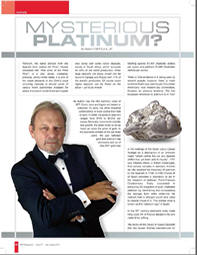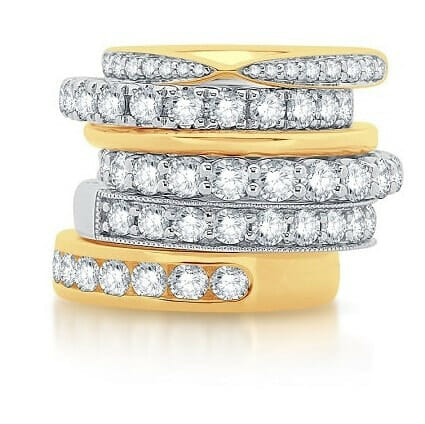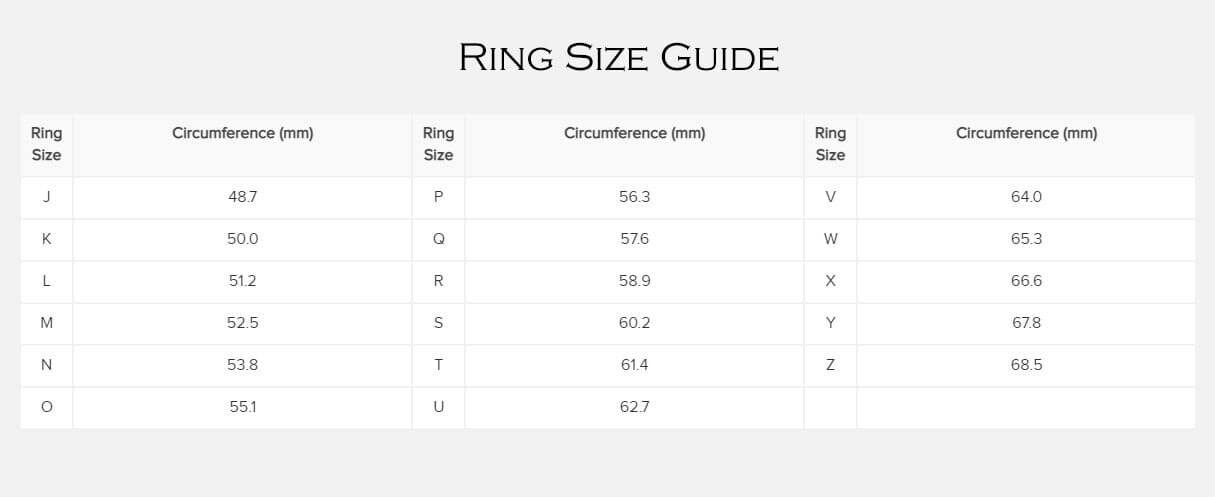Platinum, the name derived from the Spanish term ‘platina del Pinto’, literally translated into “little silver of the Pinto River”, is a very dense, malleable, precious, silvery-white metal. It is one of the rarest elements in the Earth’s crust occurring naturally in alluvial sands of various rivers (sometimes mistaken for silver). It occurs in some nickel and copper ores along with some native deposits, mostly in South Africa, which accounts for 80% of the world production, other large deposits, still being mined can be found in Canada and Russia – with 11% of the worlds production. Of course much higher deposits can be found on the Moon – yet to be mined!
Its bullion has the ISO currency code of XPT. Coins and bars and ingots are traded or collected. Its price, like other industrial commodities, is more volatile than that of gold. In 2008, the price of platinum ranged from $744 to $2,253 per ounce. Generally, in economic stability and growth, the price tends to be as much as twice the price of gold. In the economic climate of the last three years, the gap between gold and platinum has decreased and as of May 2011 Gold was fetching approx $1,434 (Australia dollars) per ounce and Platinum $1,682 (Australian dollars) per ounce!
There is little evidence of it being used by ancient people; however, there is much evidence that it was used by pre-Columbian Americans near modern-day Esmeraldas, Ecuador to produce artifacts. The first European reference to platinum is in 1557 in the writings of the Italian Julius Caesar Scaliger as a description of an unknown metal “which neither fire nor any Spanish artifice has yet been able to liquefy”. 1741 saw Charles Wood, a British metallurgist, find various samples in Jamaica. Antonio de Ulla credited the discovery of platinum to the Spanish in 1746. In l786 Charles III of Spain provided a laboratory to aid in the research of Platinum. Pierre-Francois Charbonneau, finally, succeeded in producing 23 kilograms of pure, malleable platinum by hammering and compressing the sponge form while white-hot. He realized that is strength would lend value to objects made of it. This started what is known as the “platinum age” in Spain.
In the l8th century, platinum’s rarity made King Louis XV of France declare it the only metal fit for a King.
The frame of the Crown of Queen Elizabeth (the late Queen Mother), manufactured for her coronation is made of platinum – the first British crown to made of the precious metal.
As it does not oxidize at any temperature, its resistance to wear and tarnish is well suited for making fine jewellery. In 2006, of the 239 tonnes of platinum sold, 130 tonnes were used for vehicle emissions control devices, 49 tonnes for jewellery & watchmaking (limited edition Watches generally utilize Platinum in their construction), 13.3 tonnes in electronics and 11.2 tonnes in the chemical industry as a catalyst. The remaining 35.5 tonnes went to various minor applications such as anticancer drugs etc.
Platinum’s rarity as a metal has caused advertisers to associate it with exclusivity and wealth. ‘Platinum’ debit cards have greater privileges than do ‘gold’ ones. ‘Platinum awards’ are second highest possible, higher than ‘gold’, ‘silver’ and bronze, but below “Diamond”.
A question often asked, “Is white gold the same as platinum?” The answer to this is quite simply, no!
White gold is an alloy of gold and some white metals such as silver and palladium. Measured by 24ct, l8ct, l4ct, 9ct etc simply made by mixing gold with other metals such as copper and zinc. 18ct. White gold is made by mixing 75% gold with 25% other metals such as silver and palladium. Therefore, the amount of gold is the same, but the alloy is different.
When white gold rings are new they are coated with another white metal called Rhodium, similar to platinum and share many of the properties of platinum including its white colour. Rhodium plating is used to make the white gold look whiter and much harder. However, it does wear away eventually. To keep your white gold ring looking its best, it should be re-rhodium plated approximately each 12 to l8months.
In Jewellery, unlike gold, Platinum is used in almost its pure form (approximately 95% pure). It is extremely long wearing and is very white, so it does not need to be Rhodium plated like white gold. It is very dense (heavy), so a platinum ring will feel heavier than an l8ct gold ring. However, it is expensive, approximately twice the price of an l8ct. White gold ring (excluding any gemstone costs).
Platinum is a prestige choice and is often chosen for its sophisticated appeal and popularity amongst the rich and famous. Due to its high cost, it is not normally used in the full range of Jewellery, mainly utilized in ladies Engagement rings, wedding rings – and especially wedding rings for the men (due to its hardness).
As a craftsman, Platinum can be quite challenging to work with, but gives such pleasure when a beautiful design is completed. If your preference is the white colour of metal, Platinum is so suited to Wedding bands and Engagement rings – eternally engaging, and like a Diamond – so precious!
More coming soon…












